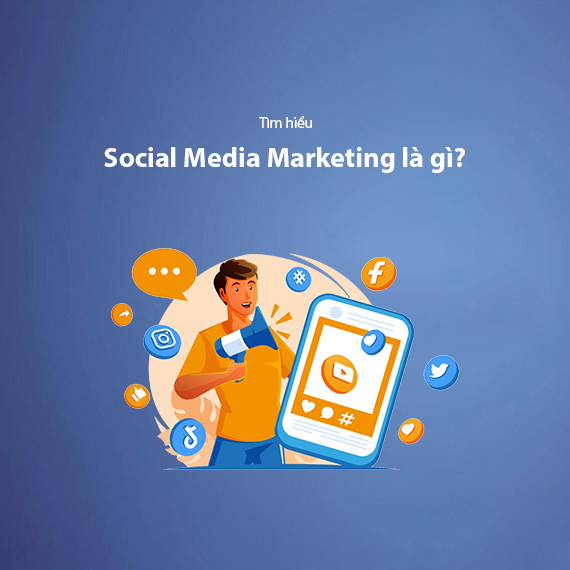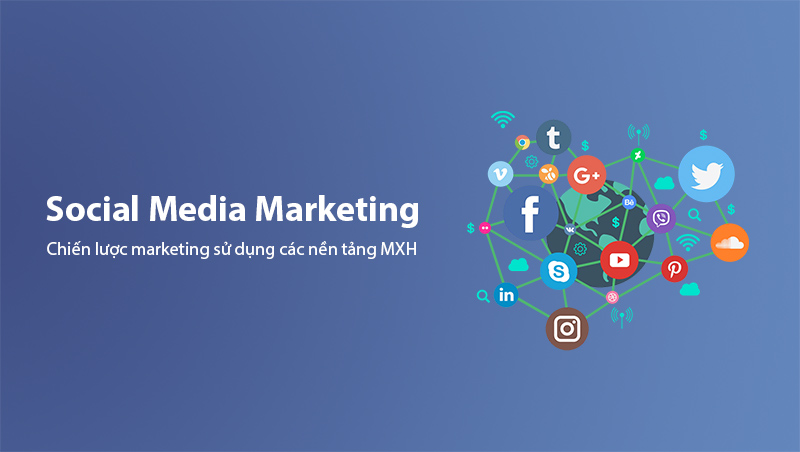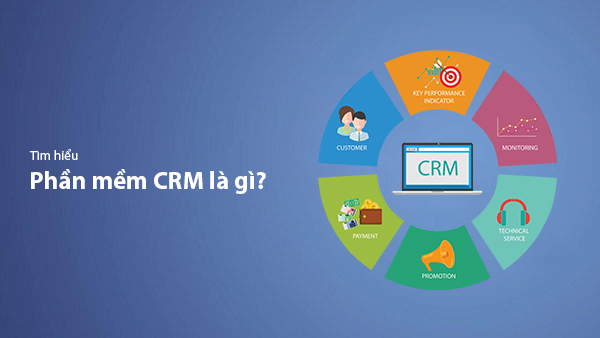What is Social Media Marketing? Optimizing Your Social Media Marketing Strategy
- Published on

- What is Social Media Marketing (SMM)?
- The Importance of SMM in Modern Marketing
- Benefits of Social Media Marketing
- Increase Brand Awareness and Recognition
- Build Relationships with Customers
- Drive Traffic and Increase Revenue
- Collect Customer Data and Optimize Marketing Strategies
- Challenges in Implementing Social Media Marketing
- Creating Consistent Content and Frequent Engagement
- Algorithm Changes and Platform Instability
- Managing Negative Feedback and PR Crises
- Accurately Measuring ROI from Campaigns
- Effective Social Media Marketing Strategies
- Set SMART Goals
- Research and Understand Your Audience (Buyer Persona)
- Choosing the Right Social Media Platform
- Creating Unique and Creative Content
- Scheduling and Optimizing Posting Times
- Measuring and Adjusting Strategy (KPIs, Analytics Tools)
- Examples of Successful SMM Campaigns
- Coca-Cola's "Share a Coke" Campaign
- Dove's "Real Beauty" Campaign
- P&G's "Thank You Mom" Campaign
- Future Trends in Social Media Marketing
- AI and Automation in Marketing
- Short-Form Video and Creative Content
- Integrating E-Commerce with Social Platforms
- Building Communities and Creating Long-Term Connections
- Conclusion
- The Importance of Implementing an Effective SMM Strategy
- Tips and Next Steps
What is Social Media Marketing (SMM)?
Social Media Marketing (SMM) is a marketing strategy that uses social media platforms to connect businesses with their current and potential customers. The goal of SMM is to build brand awareness, increase visibility, and create strong engagement between the business and users. Platforms such as Facebook, Instagram, Twitter, LinkedIn, and TikTok are the main tools helping brands reach and interact with their communities.

SMM is not just about posting content on social media. It is part of an overall marketing strategy where businesses build relationships with customers, provide valuable information, and drive profits through advertising campaigns and direct interactions.
The Importance of SMM in Modern Marketing
In the digital age, Social Media Marketing has become an indispensable tool in any marketing strategy. With over 4.7 billion social media users globally in 2024 (according to Statista), businesses cannot afford to ignore building a presence on social platforms.
This is because social media offers many opportunities to reach target customers at a lower cost compared to traditional marketing channels like TV or print media. Additionally, platforms like Facebook and Instagram provide powerful data analytics tools, allowing businesses to track their campaign performance and optimize their strategies in real-time.
Benefits of Social Media Marketing
Social Media Marketing is not just a tool to promote products or services, it also plays a critical role in building and developing a brand. Here are the key benefits that SMM brings to businesses:
Increase Brand Awareness and Recognition
One of the most important benefits of Social Media Marketing is the ability to boost brand recognition. Platforms like Facebook, Instagram, Twitter, and LinkedIn help businesses reach millions of users worldwide. When your content appears on these platforms, it significantly improves the brand recall of potential customers.
With social media advertising tools, you can target specific audiences, increasing visibility and brand recognition quickly. Running highly interactive campaigns (such as challenges, surveys, or contests) also helps attract attention and create a strong impression on your target audience.
Build Relationships with Customers
SMM is not just about delivering messages to customers; it is also a great opportunity to build long-term relationships with them. Through conversations and direct interactions on social media, businesses can better understand customer needs, preferences, and why customers choose their products/services.
Responding quickly to questions, solving problems, and even showing care through comments, messages, or live chats on social platforms increases customer satisfaction and loyalty. Moreover, regularly sharing valuable content, such as useful tips, blog posts, or new product information, helps businesses build trust and encourage customer engagement.
Drive Traffic and Increase Revenue
Another significant benefit of SMM is the ability to drive traffic to websites and online sales channels. Social media is an excellent channel to convert viewers into real customers. By sharing links to product pages, blog posts, or special offers, you create opportunities for customers to learn more about your brand and make online purchases.
Through advertising campaigns like Facebook Ads, Instagram Ads, or LinkedIn Ads, you can target specific users who are most likely to be interested in your products/services. This helps increase conversion rates and generate direct revenue from social media marketing campaigns.
Collect Customer Data and Optimize Marketing Strategies
One of the strengths of Social Media Marketing is the ability to collect customer data and use it to optimize marketing strategies. Platforms like Facebook Insights, Twitter Analytics, and Instagram Insights provide detailed information on user behavior, preferences, age, gender, and geographic location.
By analyzing this data, businesses can better understand their target audience, allowing them to fine-tune their content and advertising strategies for higher effectiveness. Understanding customer needs and behaviors helps create relevant content and predict trends, increasing the likelihood of successful conversions.
Additionally, collecting data on social media helps businesses measure campaign effectiveness accurately, enabling data-driven decisions rather than relying on guesswork. This helps optimize marketing budgets, improve ROI, and ensure that every dollar spent on ads delivers maximum value to the business.
Challenges in Implementing Social Media Marketing
Despite its many benefits, implementing Social Media Marketing (SMM) comes with challenges. To succeed, businesses must face and address the common issues outlined below:
Creating Consistent Content and Frequent Engagement
One of the biggest challenges when implementing a Social Media Marketing strategy is maintaining creative content and frequent engagement with followers. With fierce competition on platforms like Facebook, Instagram, and Twitter, businesses must produce content that is not only unique but also consistent to keep users engaged. Lackluster or unattractive content can lead to reduced engagement and loss of customer attention.
Additionally, responding quickly to users, answering questions, or responding to comments is crucial. However, as the number of followers grows, maintaining timely engagement can become a massive task, requiring significant time and resources.
Algorithm Changes and Platform Instability
An unavoidable challenge in SMM is the changing algorithms and platform volatility. Social media platforms frequently update their algorithms to adjust how content is distributed, which may cause your marketing campaigns to struggle in maintaining reach with target audiences. These changes could lead to your content being less visible or not reaching the right audience if you don’t keep up with trends and platform updates.
For example, recently, platforms like Facebook and Instagram changed their algorithms to prioritize short-form video content and Reels interactions over traditional posts. Marketers must be flexible and adjust their strategies to align with these changes.
Managing Negative Feedback and PR Crises
In Social Media Marketing, it is inevitable that businesses will receive negative feedback from customers. However, the problem worsens when such feedback spreads and may lead to a PR crisis. A bad review, a negative post, or an issue from an ineffective campaign can harm your brand's reputation.
Therefore, crisis management is a crucial aspect of an SMM strategy. Businesses need to have a contingency plan in place to handle these situations, ensuring that negative feedback is addressed professionally and promptly. Moreover, showing transparency and listening to customers can help improve the situation and rebuild trust.
Accurately Measuring ROI from Campaigns
One of the biggest challenges in implementing Social Media Marketing is accurately measuring ROI (Return on Investment) from campaigns. While there are several available analytics tools, evaluating the effectiveness of a social media marketing campaign is not always straightforward. Metrics such as engagement, shares, follower growth, or conversion rates may not always directly reflect the revenue generated by the campaign.
To measure ROI accurately, businesses need to set clear goals, use tools like Google Analytics, Facebook Insights, or Instagram Analytics to track results, and evaluate the campaign’s effectiveness. Aligning the SMM strategy with business revenue or conversion goals is critical to determining the real impact of the campaign.
Although there are many challenges when implementing Social Media Marketing, with the right strategy and flexibility, businesses can overcome them and achieve success. To do this, always be prepared for changes and approach challenges proactively.
Effective Social Media Marketing Strategies
To ensure the success of your Social Media Marketing (SMM) campaign, applying a well-planned and detailed strategy is crucial. Here are some effective strategies for implementing SMM that you cannot overlook:
Set SMART Goals
One of the key factors to the success of your Social Media Marketing strategy is setting clear goals. However, not all goals are specific enough to ensure desired results. That's why you need to apply the SMART method to set goals for your campaign.
- S (Specific) – Specific: Goals need to be clear and easy to understand.
- M (Measurable) – Measurable: You must be able to measure the results of your goals.
- A (Achievable) – Achievable: Goals must be realistic and attainable.
- R (Relevant) – Relevant: Goals should align with the business’s overall strategy.
- T (Time-bound) – Time-bound: Goals must have a clear timeframe for achievement.
Example: Your goal could be "Increase Instagram followers by 20% in 3 months". This is a specific, measurable, achievable, relevant, and time-bound goal.
Research and Understand Your Audience (Buyer Persona)
Understanding your target audience is key to creating relevant and engaging content. Buyer Persona is an idealized representation of your customer that helps you understand their needs, habits, and preferences. Building and researching your Buyer Persona will help you create the right SMM strategy focused on those most likely to convert.
To create a detailed Buyer Persona, you need to answer the following questions:
- Who is your target customer?
- What needs do they have that your product/service can solve?
- Which social media platforms do they use most?
- What type of content do they prefer? (videos, long-form articles, images, etc.)
Analytics tools from platforms like Facebook Insights, Google Analytics, or Instagram Analytics can provide valuable insights into your audience, helping you optimize your strategy more effectively.
Choosing the Right Social Media Platform
An effective Social Media Marketing (SMM) strategy must include choosing the right social media platforms that align with your target audience and business type. Each platform has its own characteristics and serves different purposes, so selecting the right platform will help you save time and costs.
- Facebook: Suitable for most business types, especially B2C, with the ability to create long-form content and use ads to target specific audiences.
- Instagram: Ideal for brands with visual products such as fashion, cosmetics, food, or travel. This platform excels in image-based content and short videos.
- LinkedIn: Suitable for B2B businesses and strategies focused on building personal branding or sharing expert content.
- X (Twitter): Great for creating conversations and quick updates about products/services.
Choosing the right platform not only helps you reach customers more effectively but also helps you save resources by not having to create content for all platforms.
Creating Unique and Creative Content
Content is king in Social Media Marketing. To capture attention and retain followers, you need to create unique and creative content. This means producing interesting, valuable, and shareable posts.
Some effective content formats include:
- Short videos (Reels, TikTok)
- Infographics
- High-quality images
- Livestreams or Webinars
- Educational or entertainment articles
Content should not only be engaging but also align with your brand and provide real value to followers. Additionally, maintaining consistency in visuals and messaging is crucial for building brand recognition.
Scheduling and Optimizing Posting Times
Scheduling posts is an important step in executing a Social Media Marketing strategy. If you post too infrequently, followers might forget about you. On the other hand, posting too much might annoy your audience.
Optimizing the timing of posts is also key. Each social platform has specific golden hours when user engagement is highest. Research to find these times and schedule your posts accordingly.
Tools like Hootsuite, Buffer, or Later can help you schedule posts easily and effectively.
Measuring and Adjusting Strategy (KPIs, Analytics Tools)
To know whether your Social Media Marketing campaign is effective, you need to regularly measure and analyze key performance indicators (KPIs). Some important metrics to track include:
- Engagement rate
- Follower growth
- Conversion rate
- Website traffic from posts
Analytics tools like Google Analytics, Facebook Insights, or Sprout Social will help you track these metrics and make necessary adjustments to your strategy.
Examples of Successful SMM Campaigns
Successful Social Media Marketing campaigns not only help brands grow quickly but also create deeper connections with customers. Below are three exemplary SMM campaigns you can refer to:
Coca-Cola's "Share a Coke" Campaign
The "Share a Coke" campaign by Coca-Cola is one of the most successful social media marketing campaigns in recent years. Launched in Australia in 2011, it quickly spread globally.
How it worked:
Coca-Cola replaced its logo on cans with popular names like John, Mary, or David. Customers were encouraged to find Coke cans with their names or friends’ names and share their joy by posting content on social media.
Success of the campaign:
- Increased brand recognition: Coca-Cola significantly boosted sales and social media shares with this campaign.
- Customer engagement: Customers felt involved in the campaign due to the personalized product.
- User-generated content: Consumers shared photos of their Coke cans with their names on Facebook, Instagram, and Twitter, making the campaign viral.
The "Share a Coke" campaign is proof of the power of personalized content and how Social Media Marketing can create a connection between the brand and its customers.
Dove's "Real Beauty" Campaign
The "Real Beauty" campaign by Dove is a standout in the beauty industry, focusing on promoting self-confidence and showcasing the real beauty of all women, rather than adhering to idealized beauty standards typically portrayed in ads.
How it worked:
Dove launched this campaign with a series of videos and images on social media, showing women of various body shapes and skin tones in their natural state, without editing. Dove also used the #RealBeauty hashtag to encourage users to share their own stories and photos of real beauty.
Success of the campaign:
- Emotional connection: Dove succeeded in emotionally connecting with its customers, making the brand feel more relatable and friendly.
- Increased loyalty: The campaign not only attracted consumers but also built a loyal community where people shared their stories of natural beauty.
- Viral on social media: The #RealBeauty hashtag became a movement, garnering massive engagement across social platforms.
Dove's "Real Beauty" campaign is an excellent example of how a campaign can sell not just a product but also create a powerful message about self-confidence and redefining beauty in modern society.
P&G's "Thank You Mom" Campaign
Procter & Gamble's "Thank You Mom" campaign was a heartfelt initiative launched during the 2012 Winter Olympics in London, aimed at honoring mothers and women in our lives. The goal was to foster gratitude and emotional connection with customers by celebrating the role of mothers.
How it worked:
P&G produced a series of emotional videos, each telling the story of an Olympic athlete's journey, from their first steps to winning a medal. Mothers were depicted as the ones who supported and cared for them along the way. These videos were shared on platforms like YouTube, Facebook, and Twitter, with the #ThankYouMom hashtag encouraging people to share their own emotional stories.
Success of the campaign:
- Emotional impact: The campaign made a strong emotional impression on consumers, especially mothers, who felt that the brand understood and valued them.
- Significant growth: P&G saw a notable increase in sales due to the emotional connection built with customers.
- Widespread sharing: The videos and #ThankYouMom hashtag quickly went viral on social media, generating wide-scale sharing within communities.
The "Thank You Mom" campaign not only raised brand awareness but also created a long-lasting emotional connection with customers, helping P&G secure a strong position in consumers’ minds.
Future Trends in Social Media Marketing
Social Media Marketing (SMM) continues to evolve, shaped by new technological trends and changes in consumer behavior. Here are some key trends marketers should keep an eye on to stay competitive and optimize their SMM strategies moving forward:
AI and Automation in Marketing
Artificial Intelligence (AI) and automation are becoming essential tools in Social Media Marketing. AI helps marketers better understand customer behavior, predict trends, and optimize campaigns more effectively.
How AI is changing Social Media Marketing:
- Content personalization: AI can analyze customer data to offer content suggestions tailored to specific interests and needs.
- Chatbots and automated responses: AI-powered chatbots can answer customer questions, interact 24/7, and create a smoother user experience.
- Ad optimization: Social media platforms like Facebook and Instagram use AI to optimize campaigns, making them more cost-effective and improving conversion rates.
AI not only automates processes but also saves time and improves campaign efficiency, offering significant opportunities for both small and large brands.
Short-Form Video and Creative Content
Short-form videos are becoming a prominent trend on most social media platforms, from TikTok to Instagram Reels and YouTube Shorts. Users increasingly prefer short, easy-to-consume, and highly engaging video content.
Why short-form videos are becoming popular:
- Short attention spans: In today’s world, users’ attention spans are shorter. Short videos meet the need for quick and easy content consumption, and users can easily share or re-watch them.
- Creative content: Short-form videos not only enhance engagement but also offer a great opportunity for creative expression. Brands can use these videos to showcase products, run challenges, or combine music and unique effects to grab attention.
Successful short-form video campaigns prove that combining creative content with video technology is one of the best ways to keep customers engaged and build a strong brand on social media.
Integrating E-Commerce with Social Platforms
E-commerce and Social Media are becoming increasingly integrated. Platforms like Instagram, Facebook, and TikTok are incorporating shopping features, allowing users to buy products directly within the platform.
Benefits of integrating e-commerce into Social Media:
- Seamless shopping experience: Consumers can easily browse and purchase products without leaving the app, reducing friction in the buying process and creating a smooth shopping experience.
- Higher conversion rates: Adding online shopping tools to posts and videos increases the likelihood of conversions as users are more likely to purchase when they are interested in a product.
- Increased revenue: Platforms like Instagram Shopping and Facebook Marketplace help increase sales and are powerful tools for brands, especially small businesses, to reach and sell directly to a large audience.
Integrating e-commerce into social media platforms opens up new opportunities for retailers and brands, while also optimizing the shopping process and driving revenue growth.
Building Communities and Creating Long-Term Connections
One of the key trends in Social Media Marketing is community building. Brands are increasingly focusing not just on product marketing, but also on creating communities based on shared interests and values on social media platforms.
Effective Ways to Build a Community:
- Create spaces for interaction: Brands can create Facebook groups, online forums, or use features like Twitter Spaces and Instagram Live to provide opportunities for customers to engage, share opinions, and connect with each other.
- Encourage participation: Instead of merely broadcasting messages, brands need to enable customers to join discussions, share their experiences, and provide feedback.
- Deep connections: Online communities help brands better understand their customers, allowing them to optimize products and services to meet their needs and desires.
Building and maintaining a community not only creates a sustainable relationship but also helps the brand gain loyal advocates, fostering sustainable growth in today’s competitive social media environment.
Conclusion
Social Media Marketing (SMM) has become an indispensable part of the overall marketing strategy for modern brands. Implementing an effective SMM strategy not only helps increase brand awareness, but also opens up opportunities to reach potential customers, build a loyal community, and drive revenue. However, to achieve these results, businesses need to understand the core principles, identify challenges, and apply suitable strategies.
The Importance of Implementing an Effective SMM Strategy
A successful SMM strategy does not only help achieve short-term growth, but also serves as a solid foundation for the long-term development of the brand. When you understand customer needs and use social platforms intelligently, you can not only build strong relationships with customers but also measure effectiveness and optimize strategies over time. Moreover, using new features and technologies like AI or short videos can help you stay ahead of competitors, creating creative and attention-grabbing marketing campaigns.
An effective SMM strategy also plays a crucial role in maintaining sustainable competitiveness, helping brands maintain a strong presence on social platforms and respond quickly to market changes.
Tips and Next Steps
To implement an effective Social Media Marketing strategy, here are some tips you can consider:
-
Set clear goals: Before you begin, define clear and specific marketing goals, such as increasing brand awareness, boosting sales, or building a community. This helps you focus on the right strategies and measure effectiveness.
-
Research your target audience: Understanding your buyer persona is crucial in creating relevant and effective content. Researching customer behavior and needs will help you choose the right content and strategy.
-
Choose the right platforms: Each social platform has its own characteristics and user base. Select the platform that aligns with your strategic goals and target audience to optimize results.
-
Create creative and valuable content: Content is the key element in SMM. Be creative and focus on providing real value to users. Don’t just focus on promoting products; build stories, videos, or posts that engage customers and strengthen their connection with your brand.
-
Measure and continuously adjust: Measure campaign performance and use analytics tools to track important metrics like engagement rate, traffic volume, and ROI. Based on the data gathered, adjust your strategy to optimize results.
Finally, in a constantly changing world, connecting with customers through social media platforms will always be one of the deciding factors in the success of any marketing strategy. Keep your creativity alive, stay updated on new trends, and continuously refine your strategy to achieve sustainable results.
By applying the strategies and advice above, you will be able to optimize your Social Media Marketing strategy and achieve your business goals effectively and sustainably.
Latest Posts

Lesson 26. How to Use break, continue, and return in Java | Learn Java Basics
A guide on how to use break, continue, and return statements in Java to control loops and program execution flow effectively.

Lesson 25. The do-while Loop in Java | Learn Basic Java
A detailed guide on the do-while loop in Java, including syntax, usage, examples, and comparison with the while loop.

Lesson 24. How to Convert Decimal to Binary in Java | Learn Basic Java
A guide on how to convert numbers from the decimal system to the binary system in Java using different methods, with illustrative examples.

Lesson 23. How to Use the While Loop in Java | Learn Java Basics
Learn how to use the while loop in Java with syntax, real-world examples, and practical applications in Java programming.
Related Posts

What is CRM Software? Top 15+ Best Customer Relationship Management Software
Discover the definition of CRM software, its role in customer relationship management, and a list of 15+ top CRM solutions to help businesses enhance customer service performance and achieve sustainable growth.

What Is Local Guide? Benefits of Becoming a Local Guide on Google Maps
Local Guide is a community program by Google Maps where users can contribute reviews, photos, and location information to improve map data. This article explains what Local Guide is and the benefits of being an active member.

What is Zalo OA? A Detailed Guide to Creating Zalo Official Account for Businesses
Zalo Official Account (Zalo OA) is a crucial tool that helps businesses connect with customers and optimize their online business operations. This article provides a step-by-step guide on how to create a Zalo OA from A to Z.

What is Zalo Ads? A Guide to Running Effective Zalo Ads
Discover what Zalo Ads are and learn how to run effective Zalo advertising campaigns to reach customers and boost sales in the digital era.

